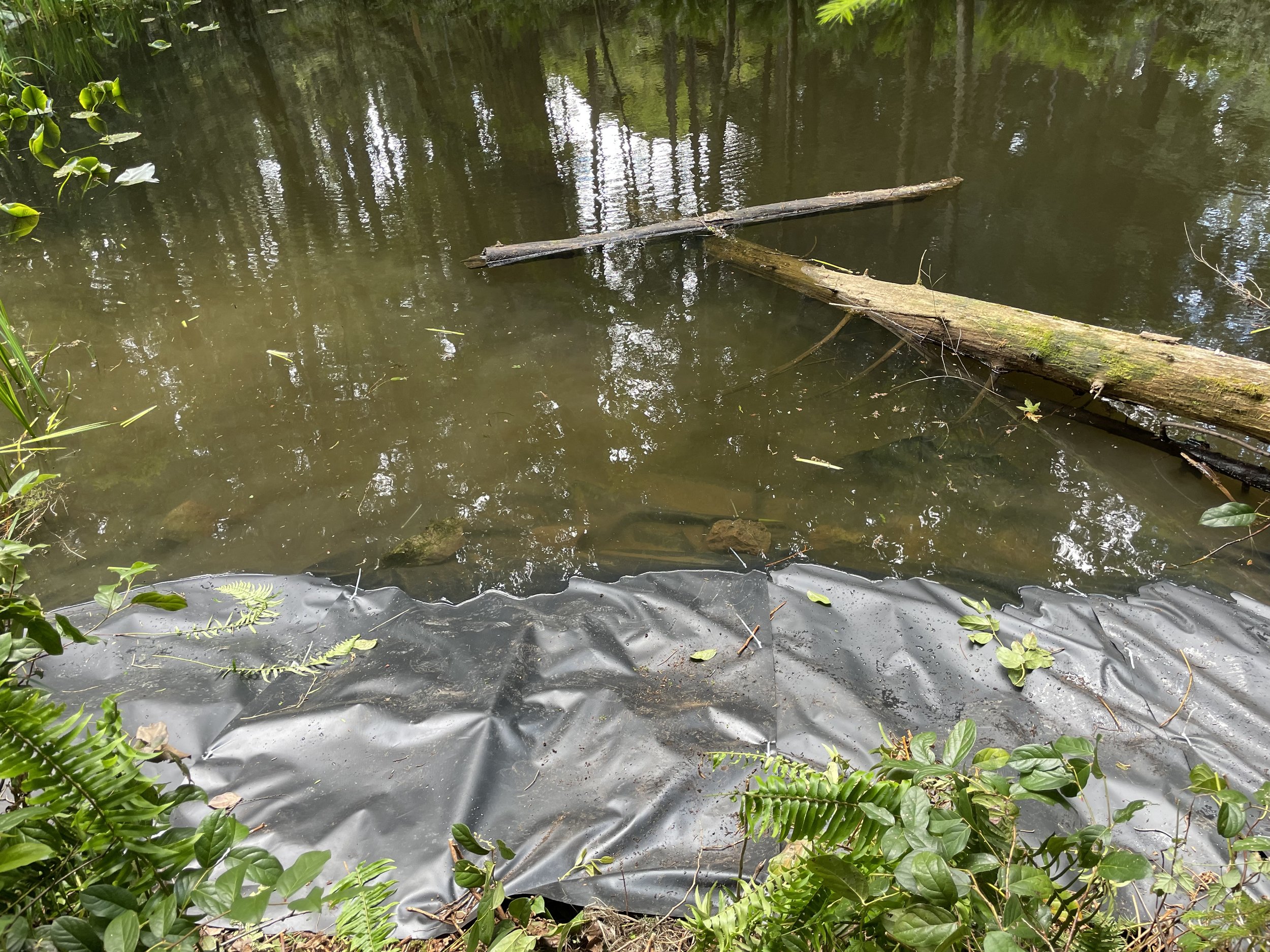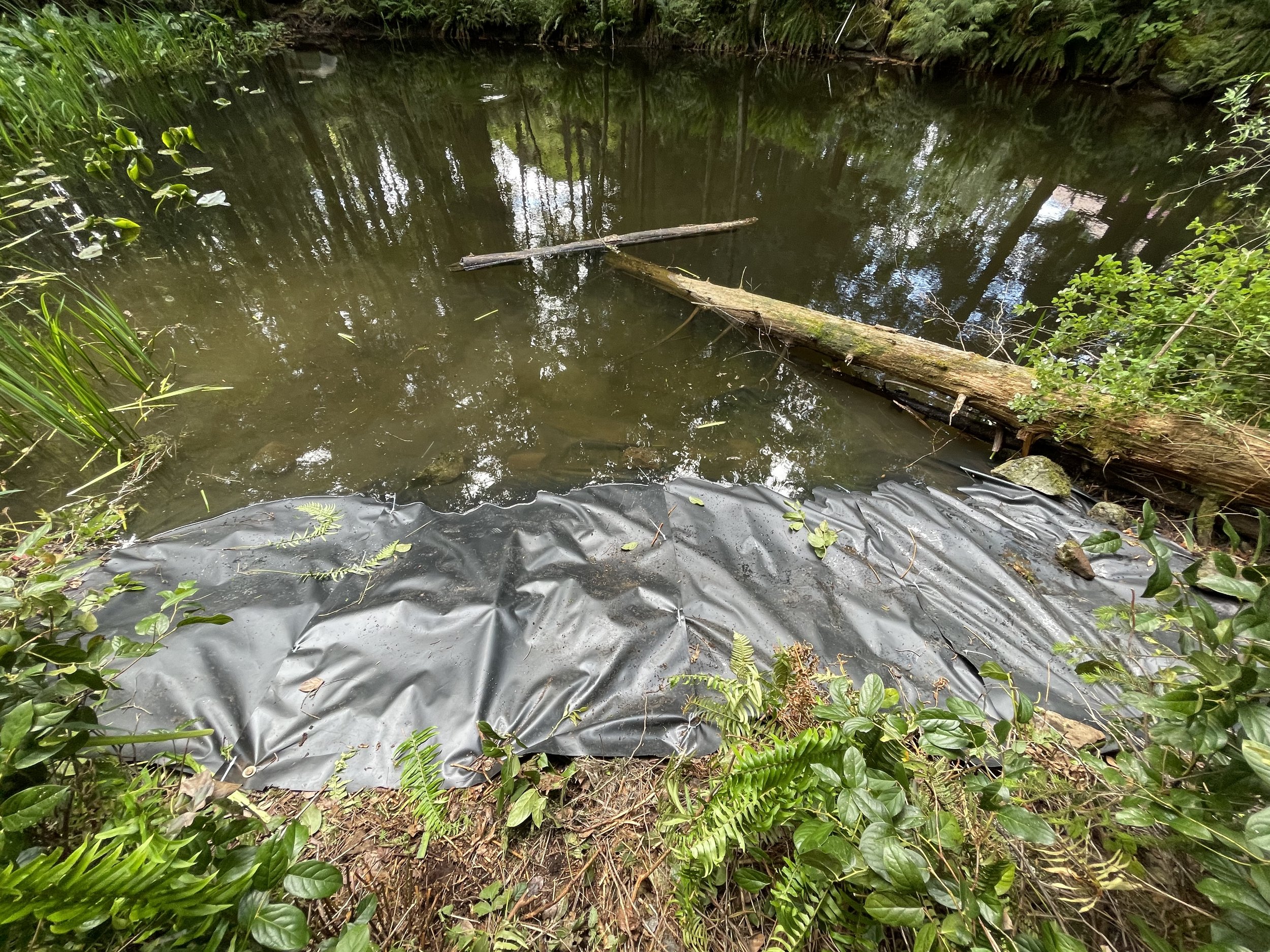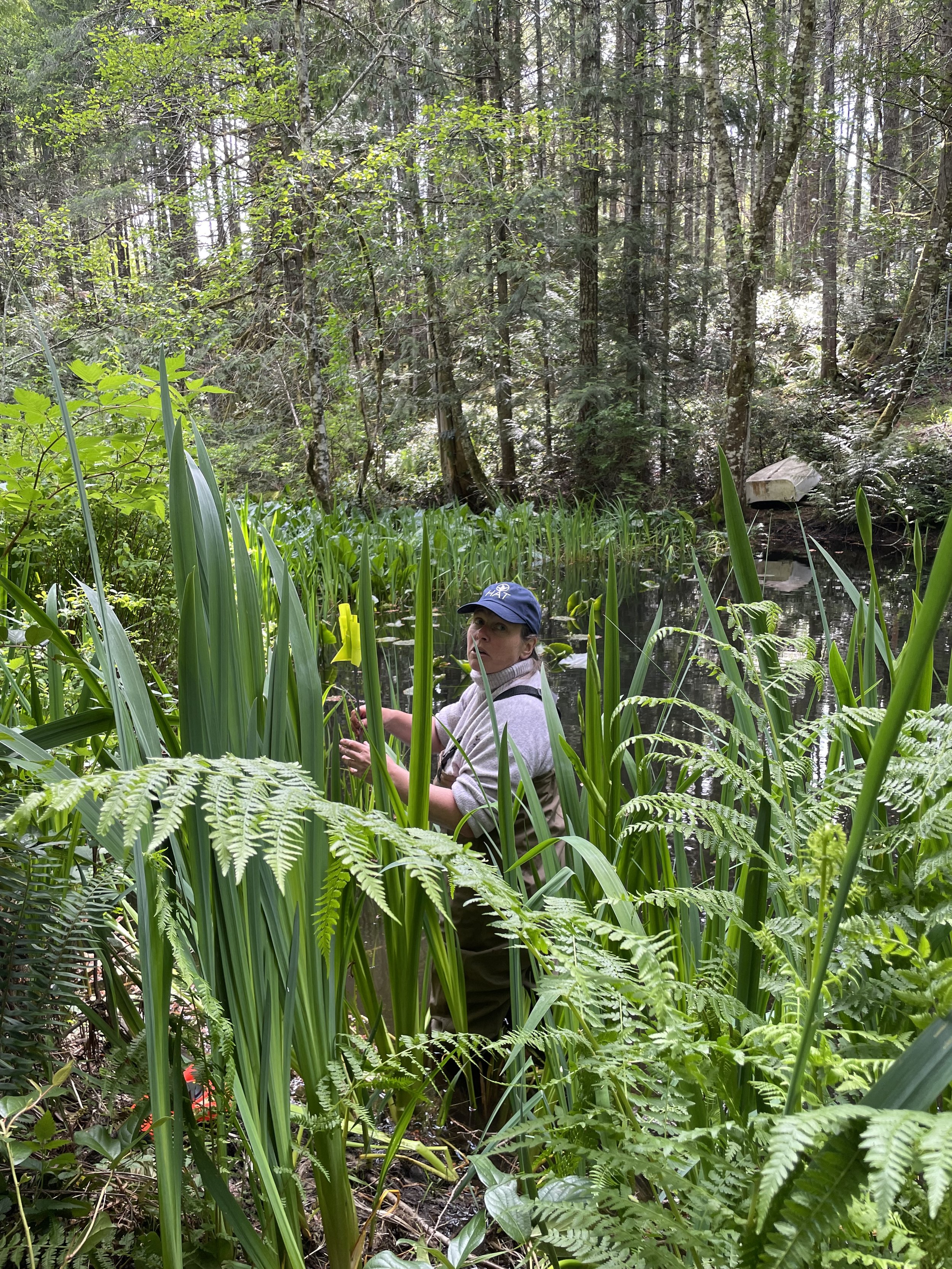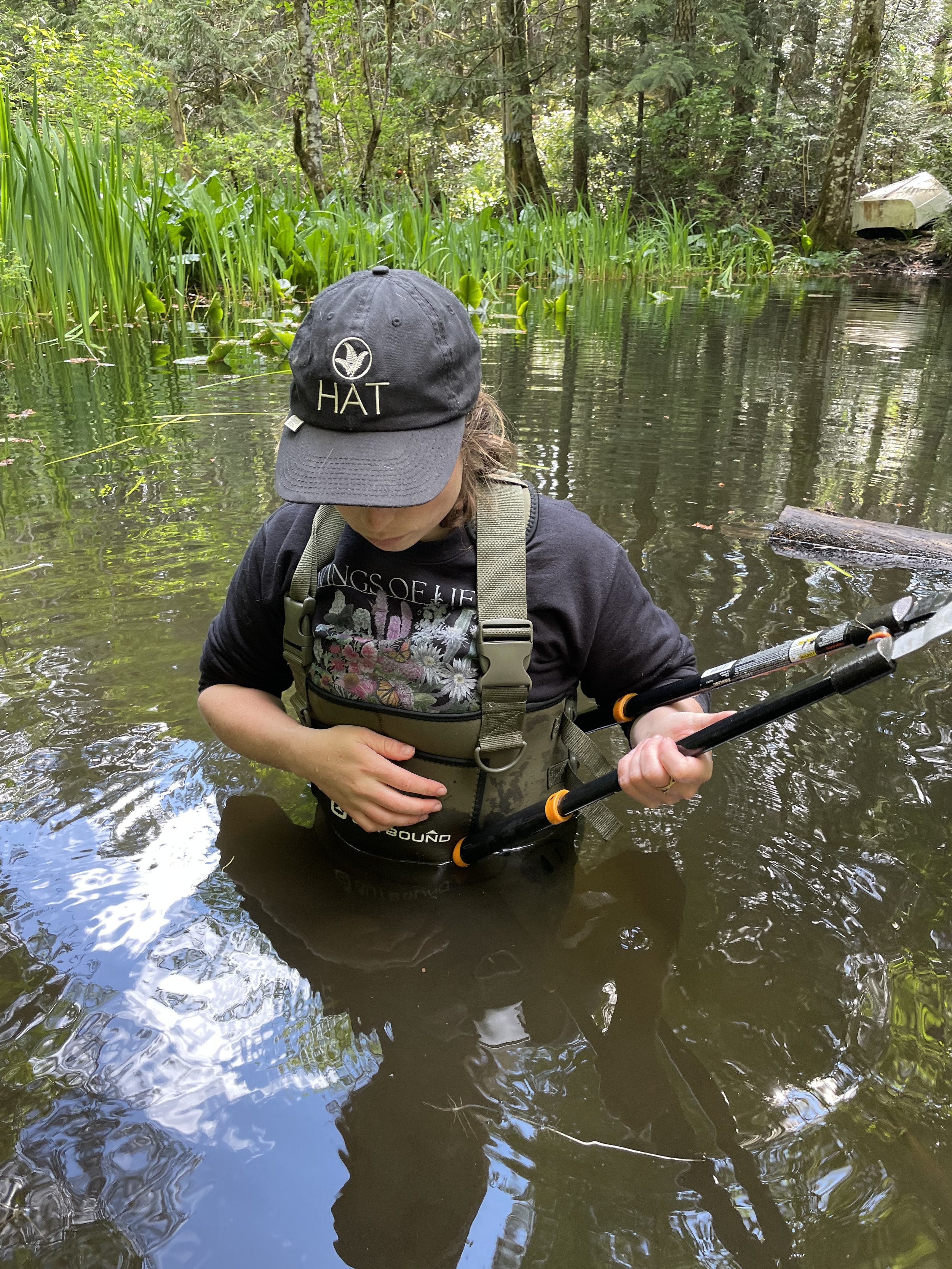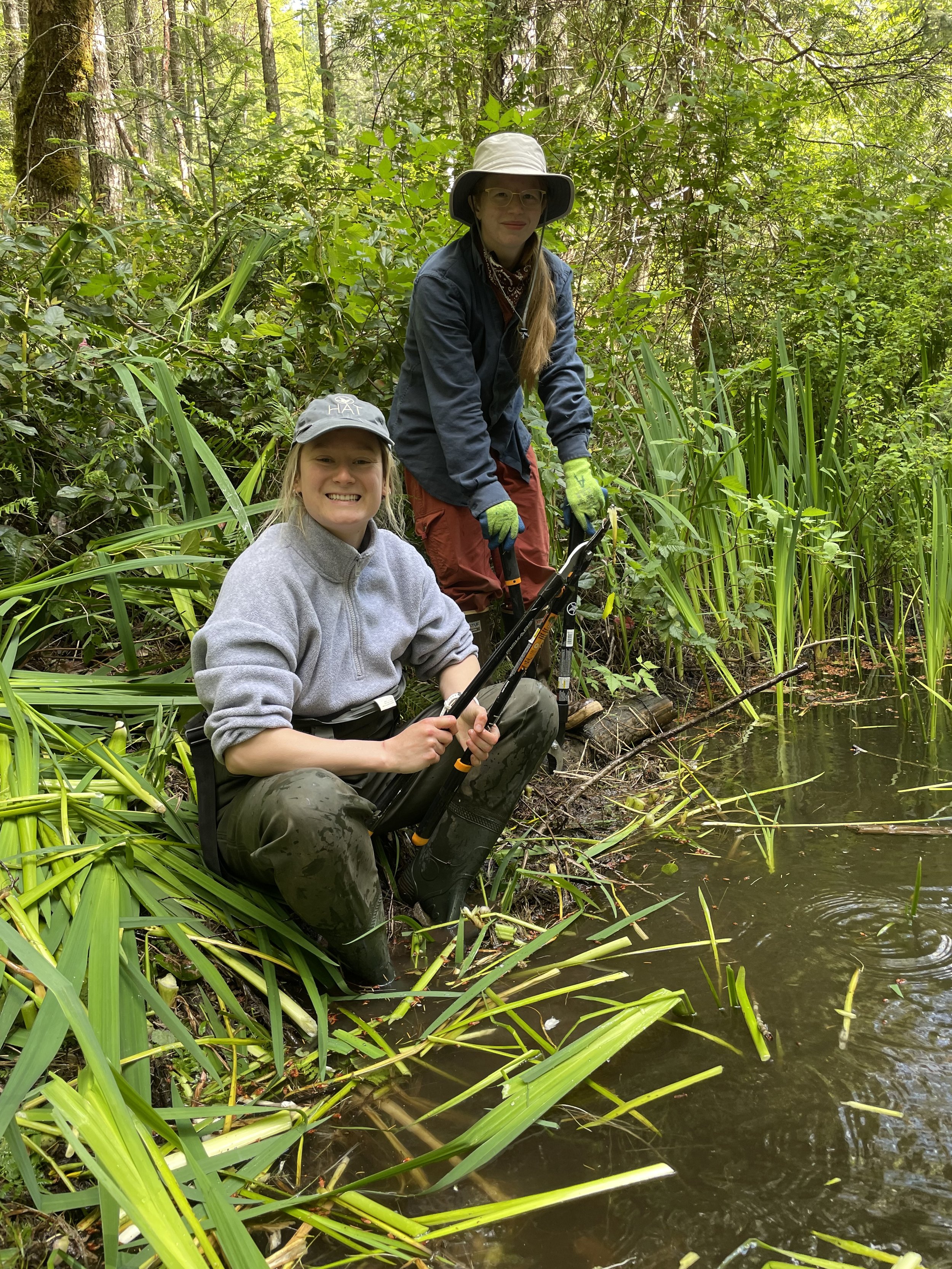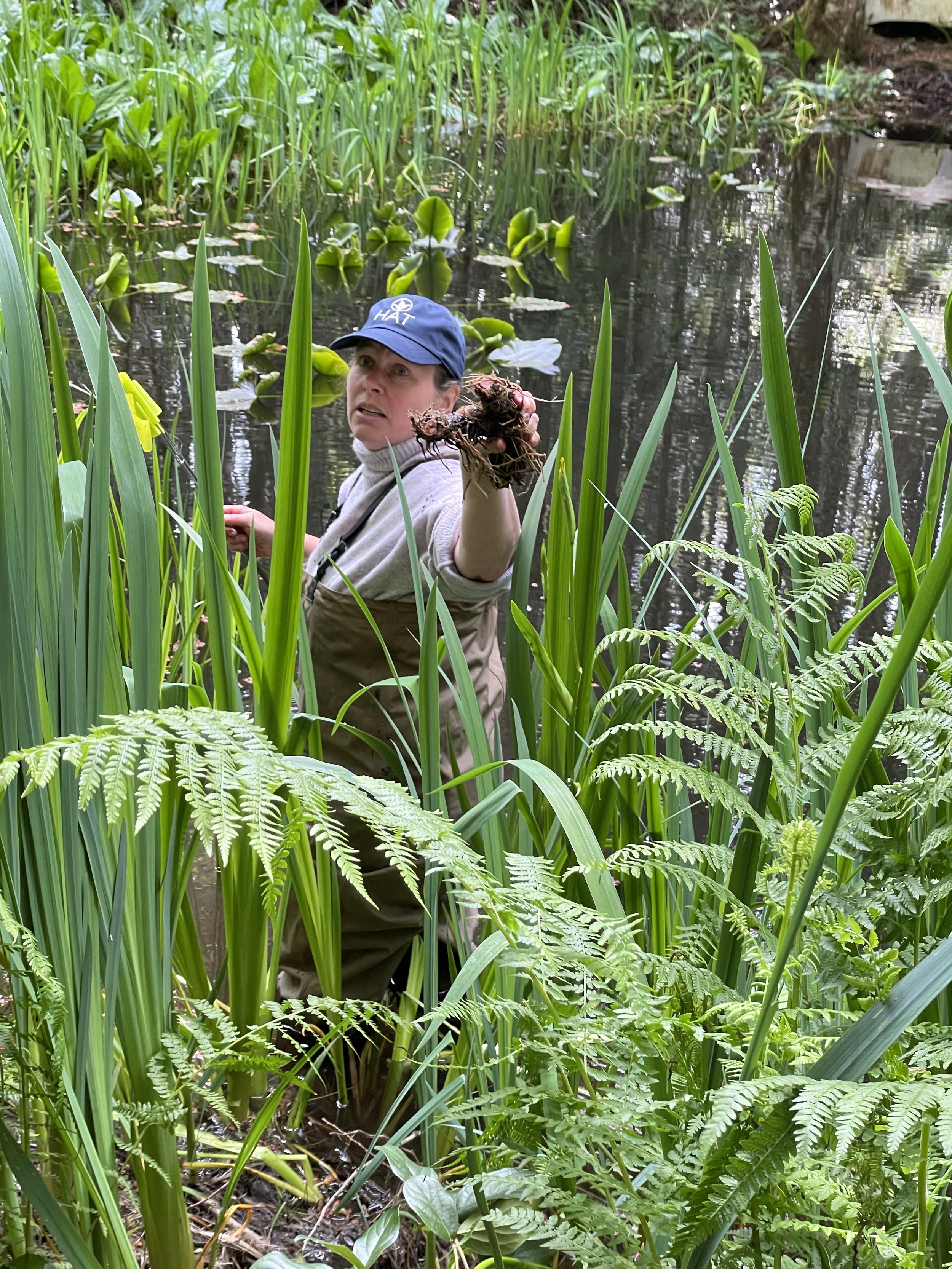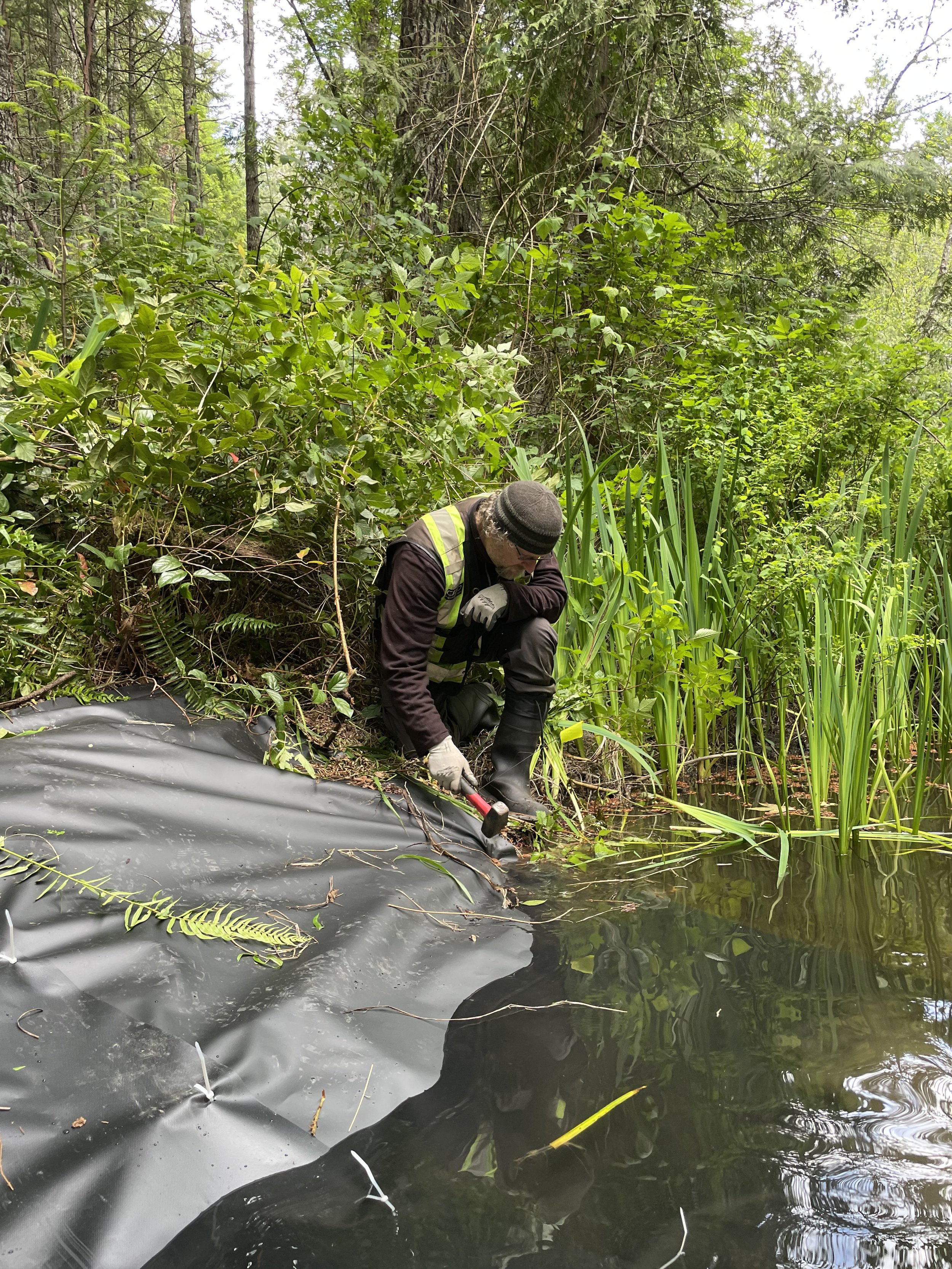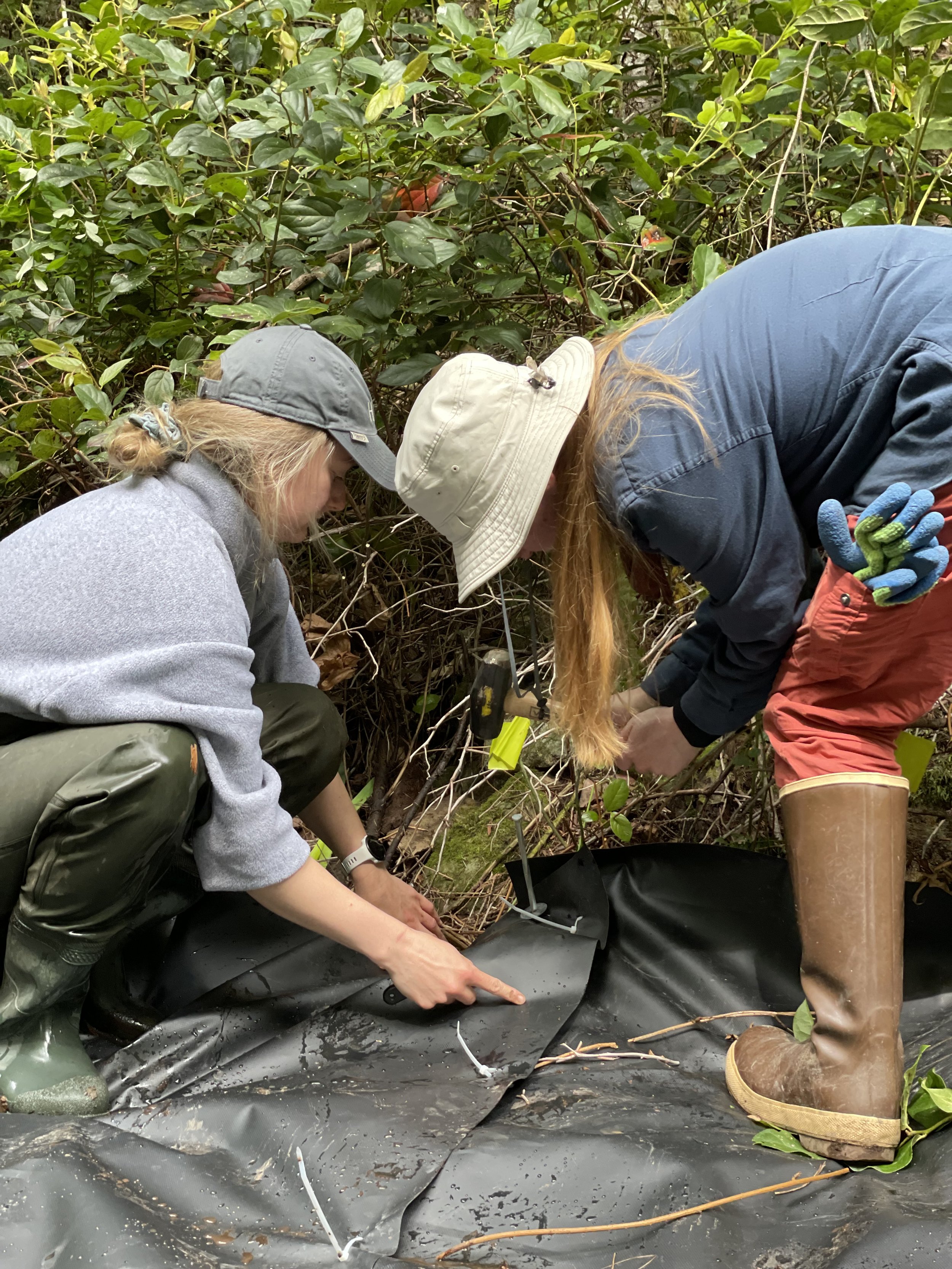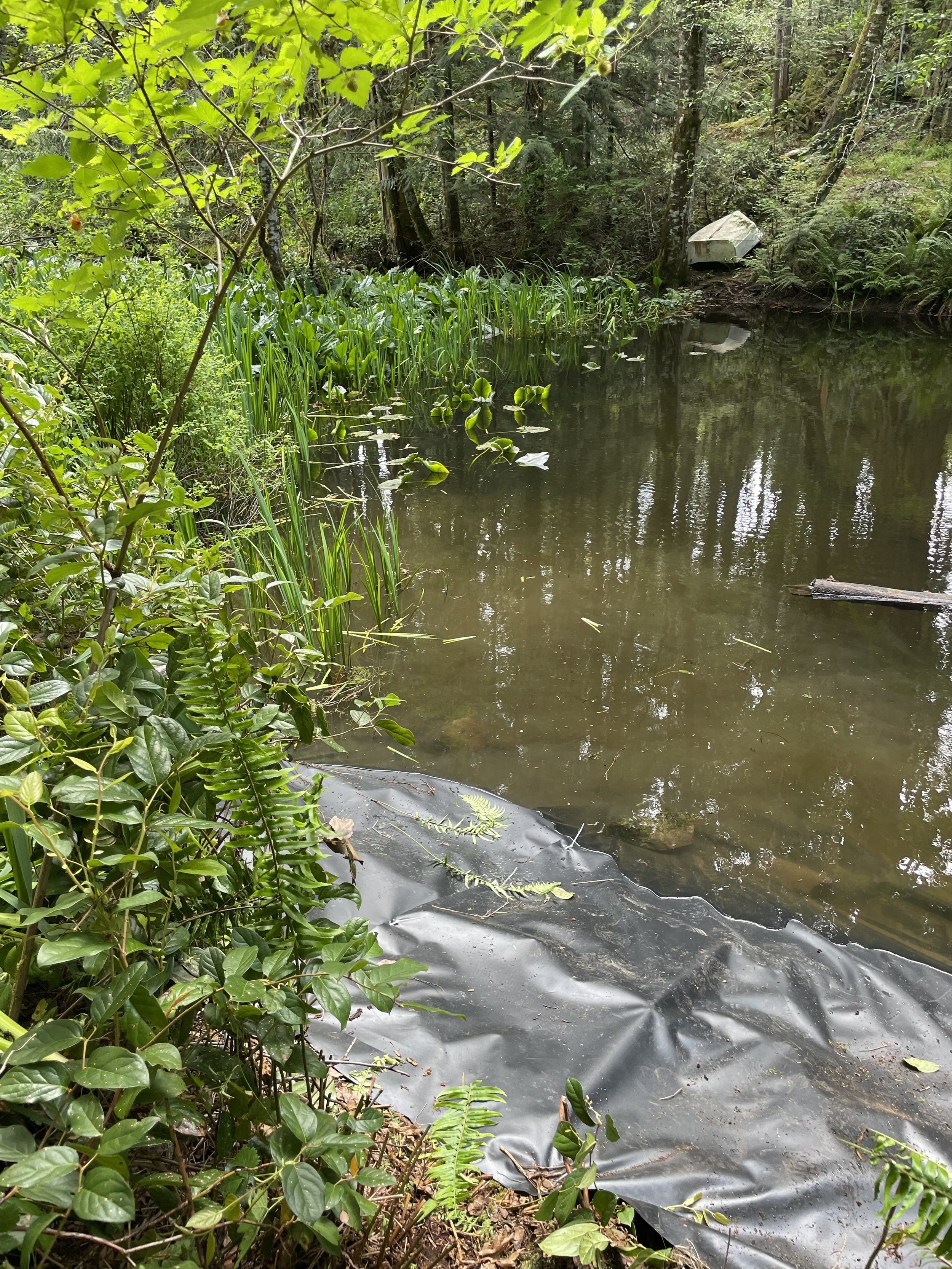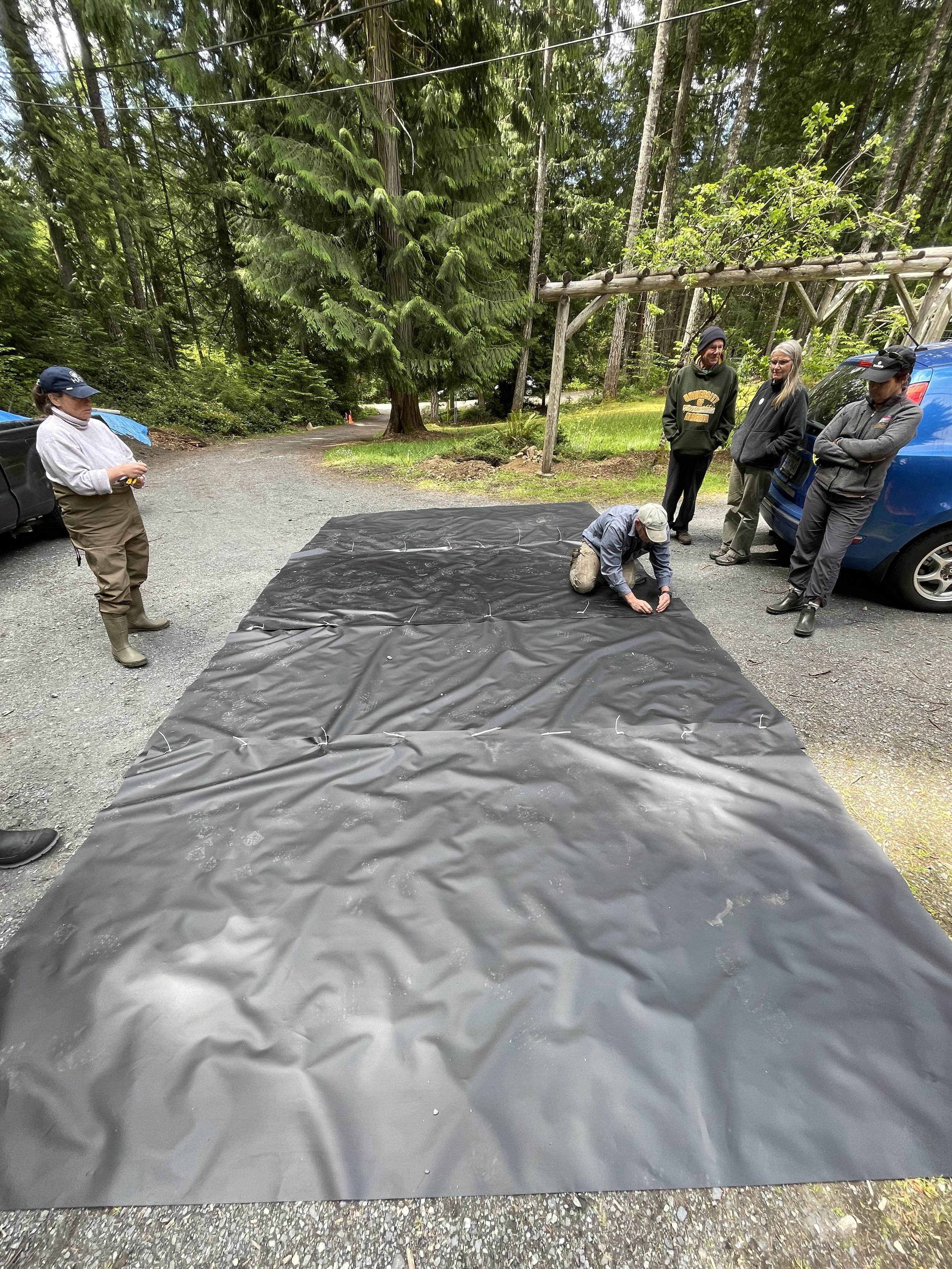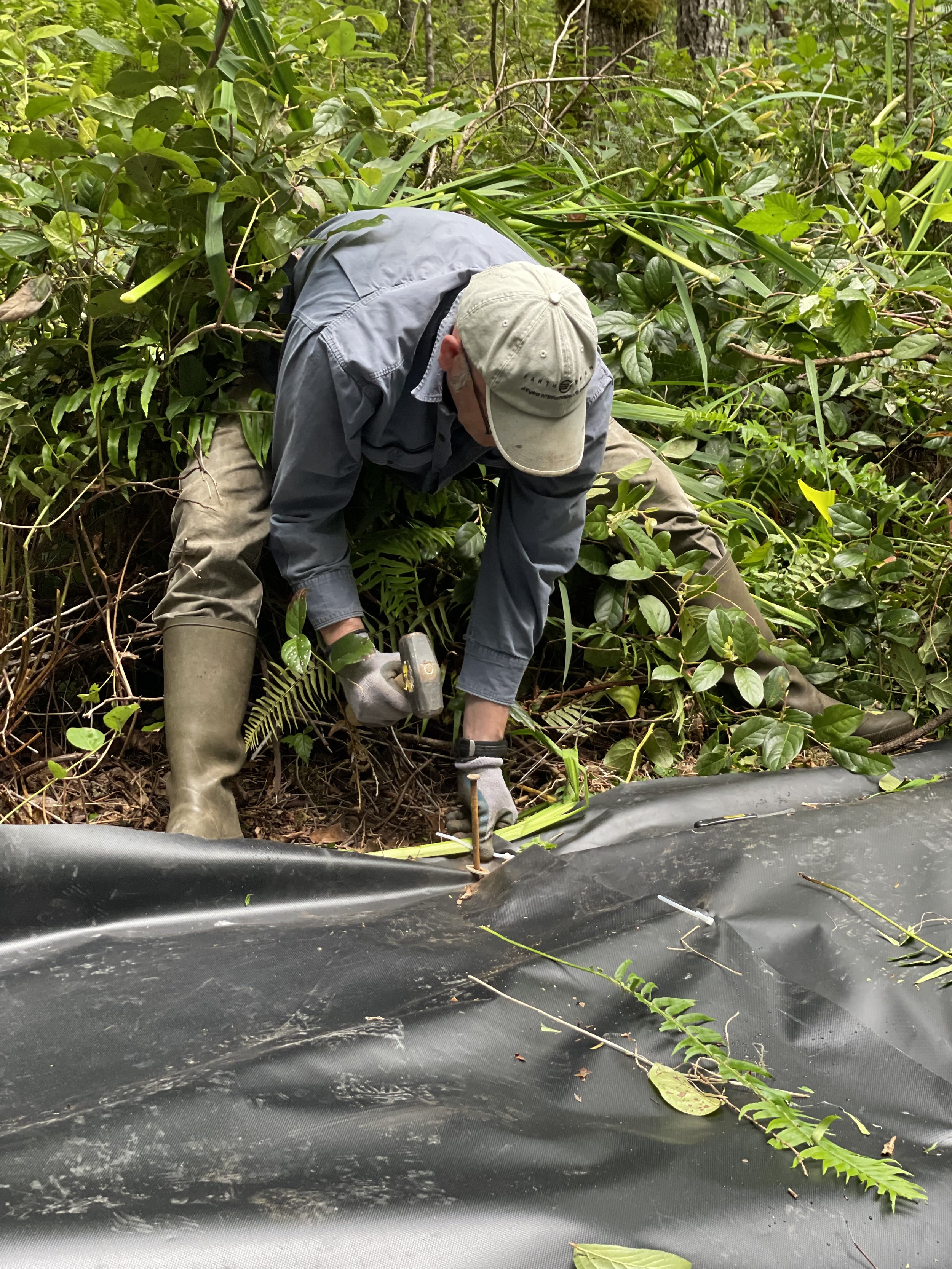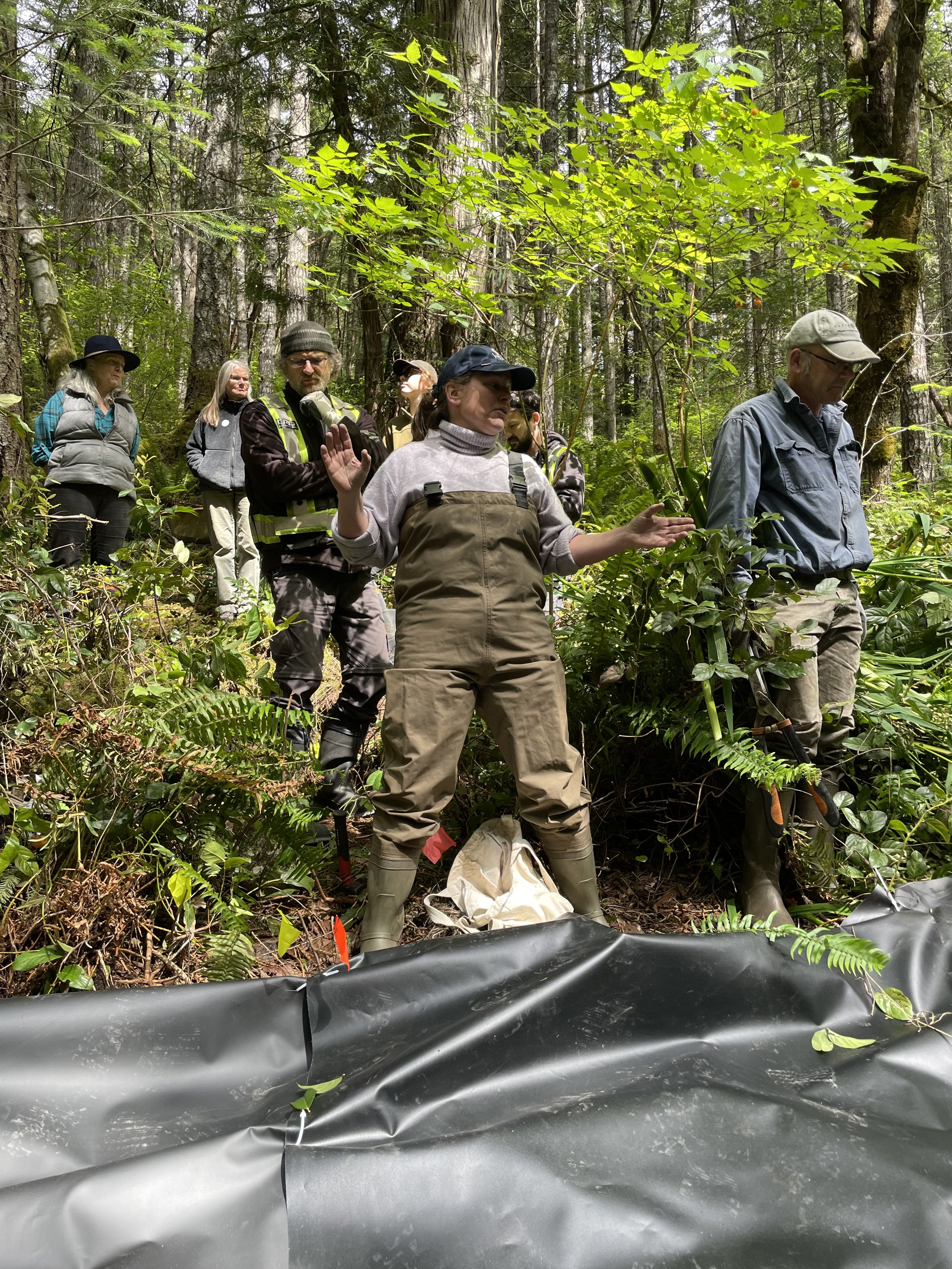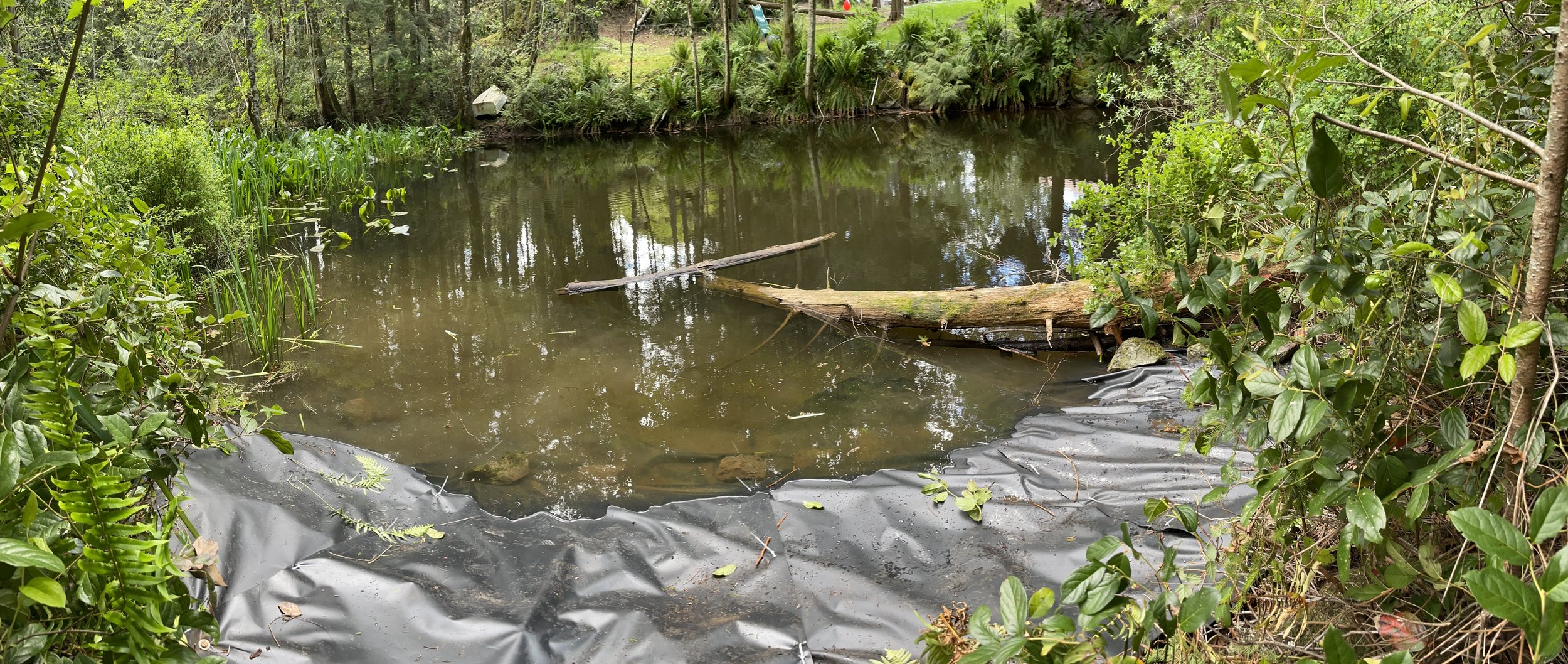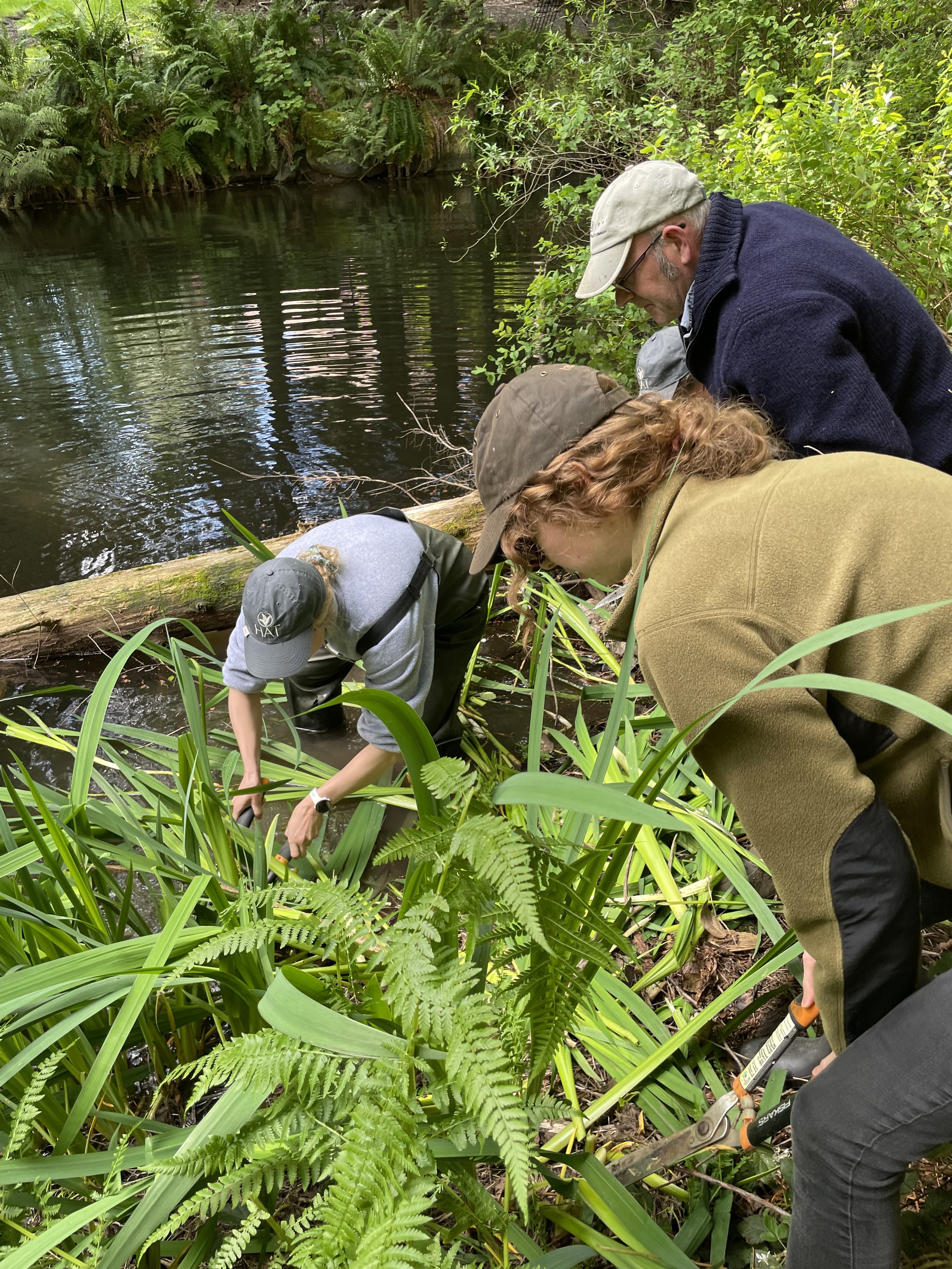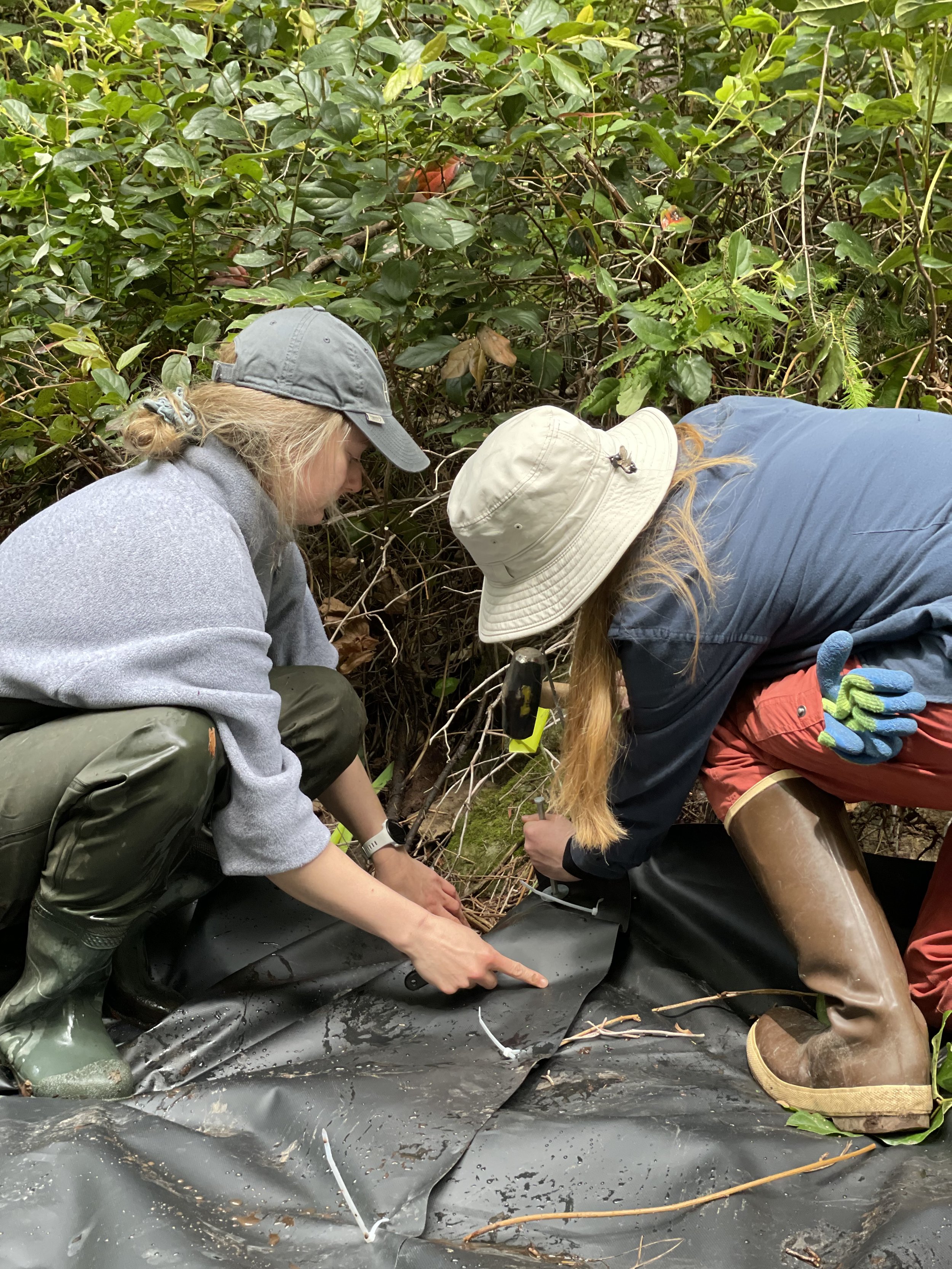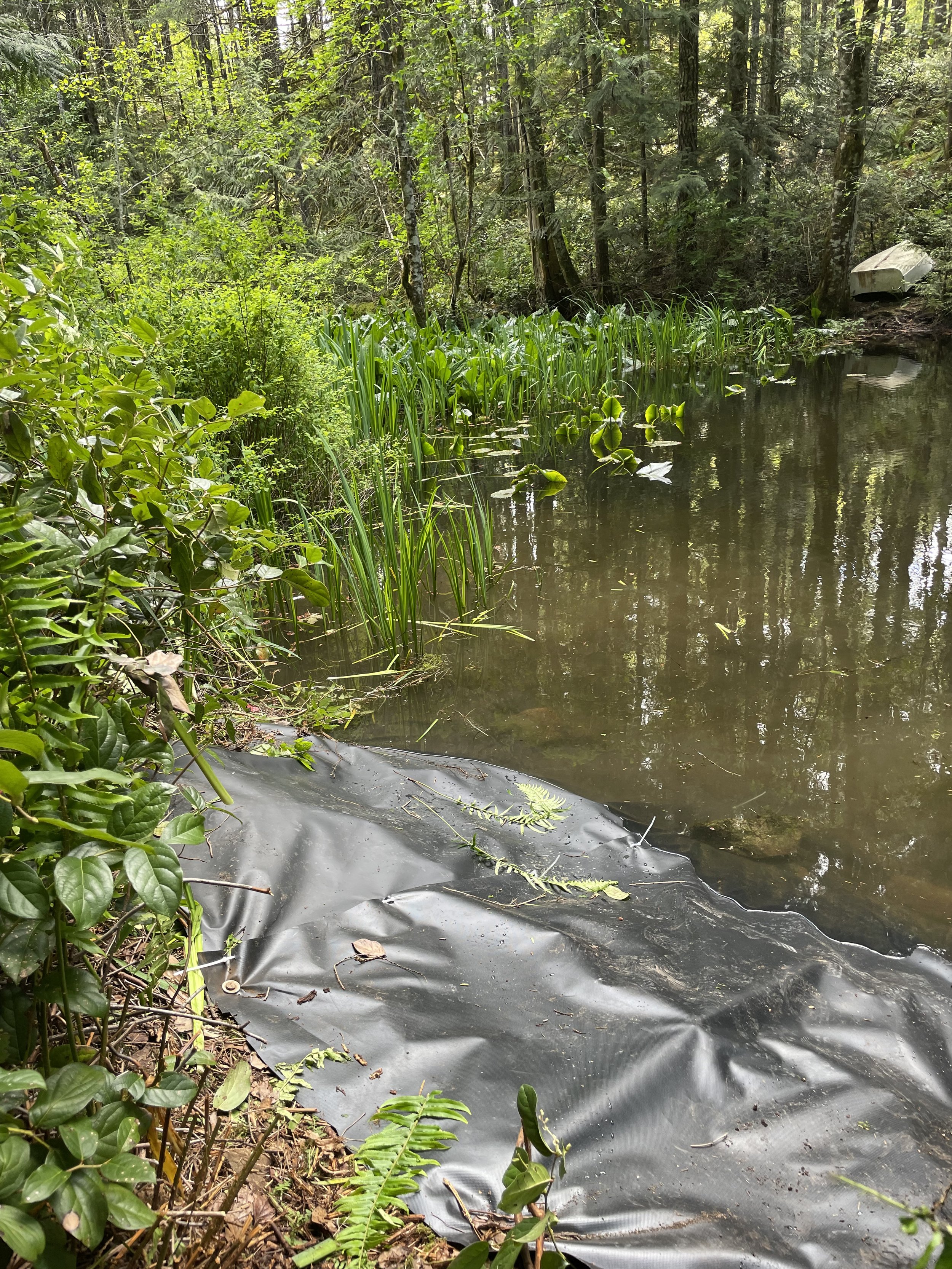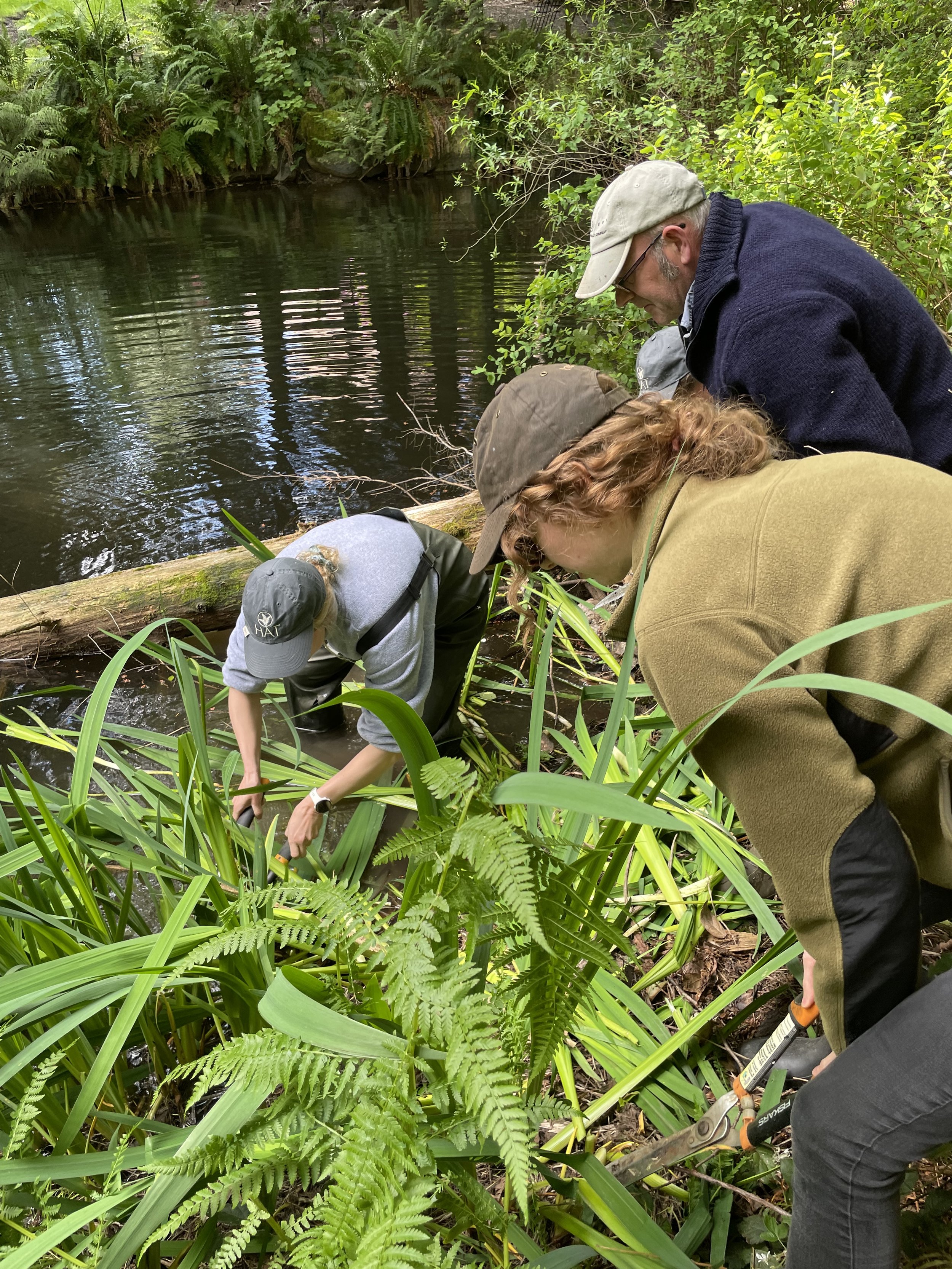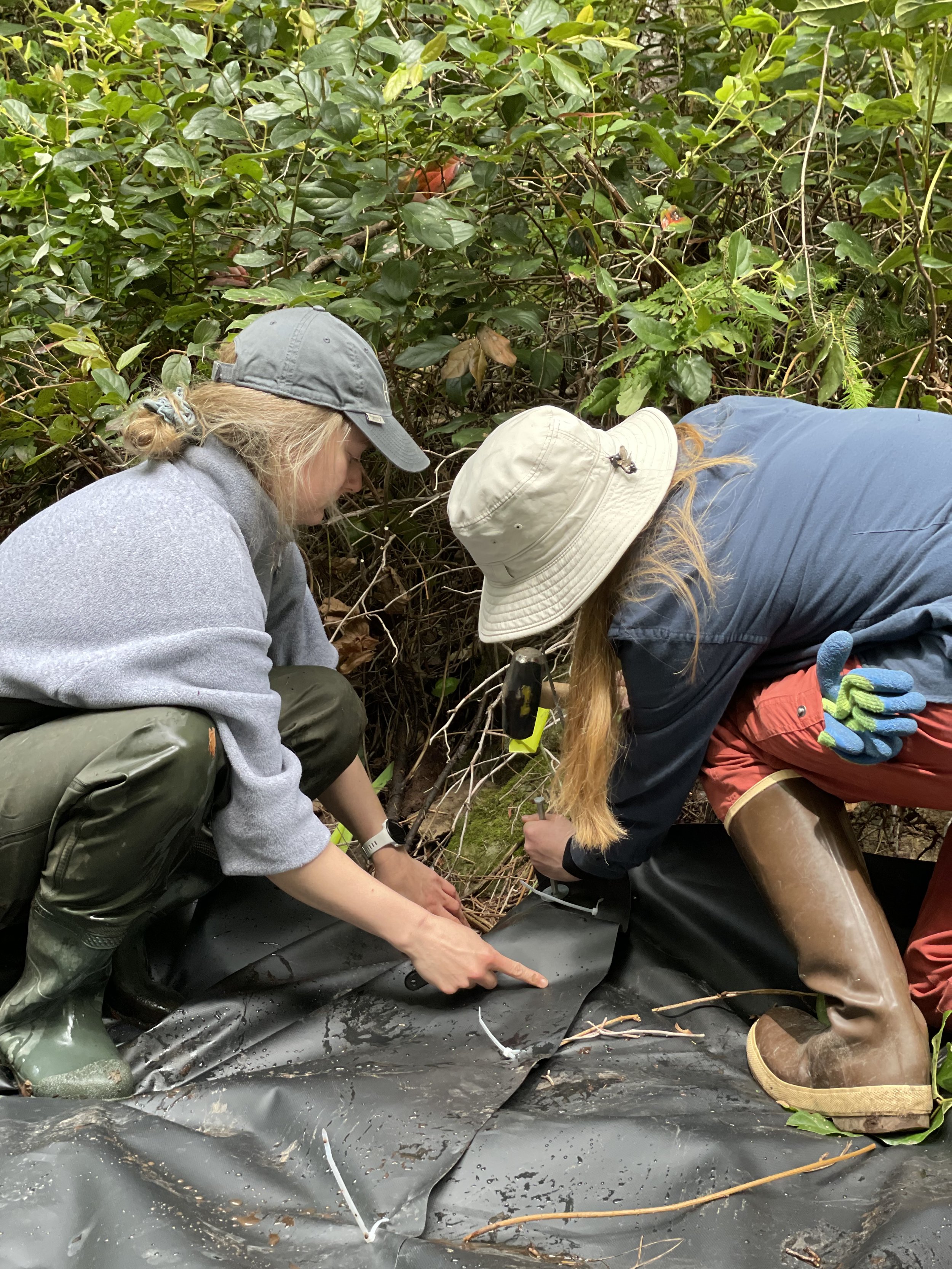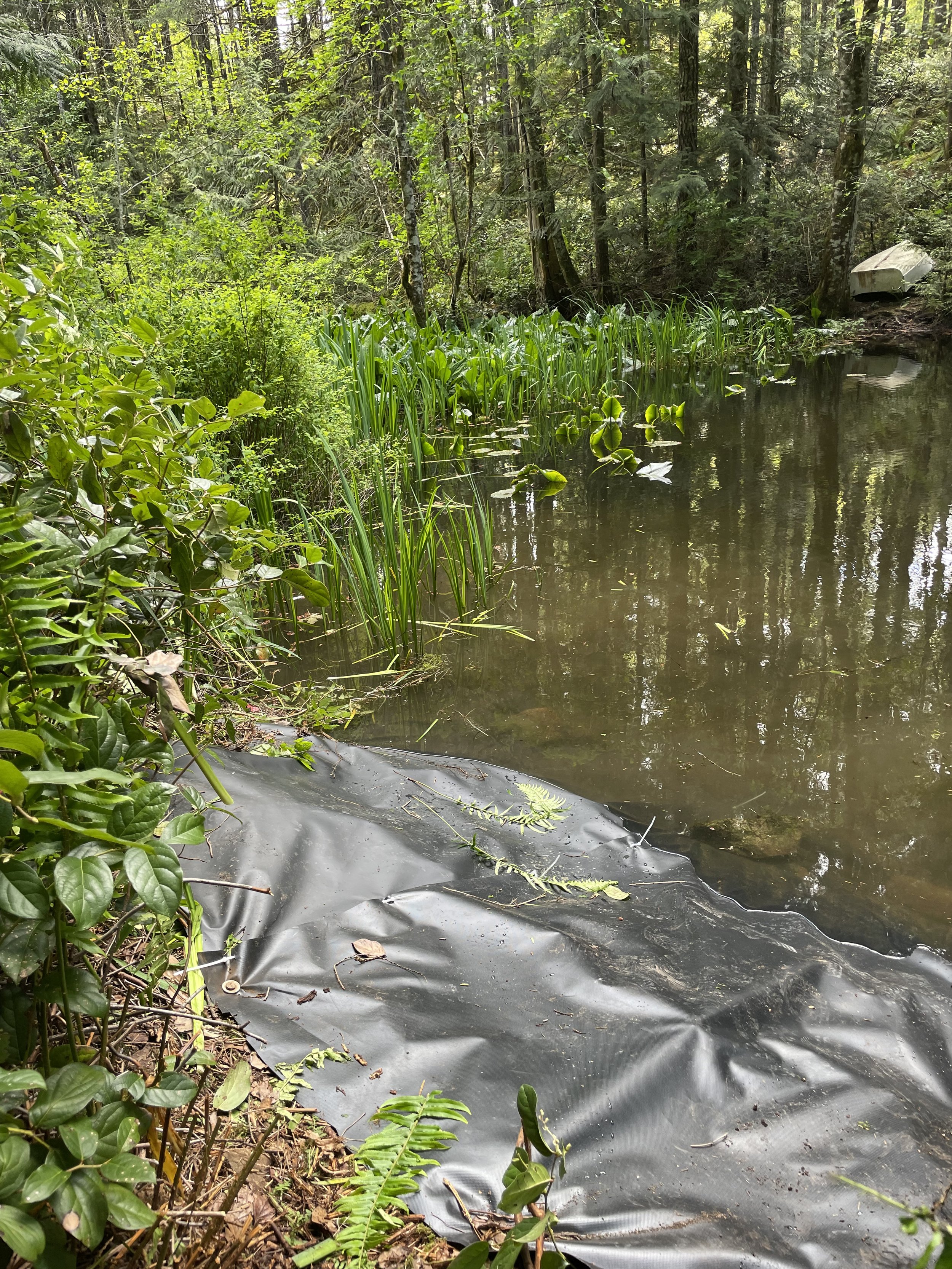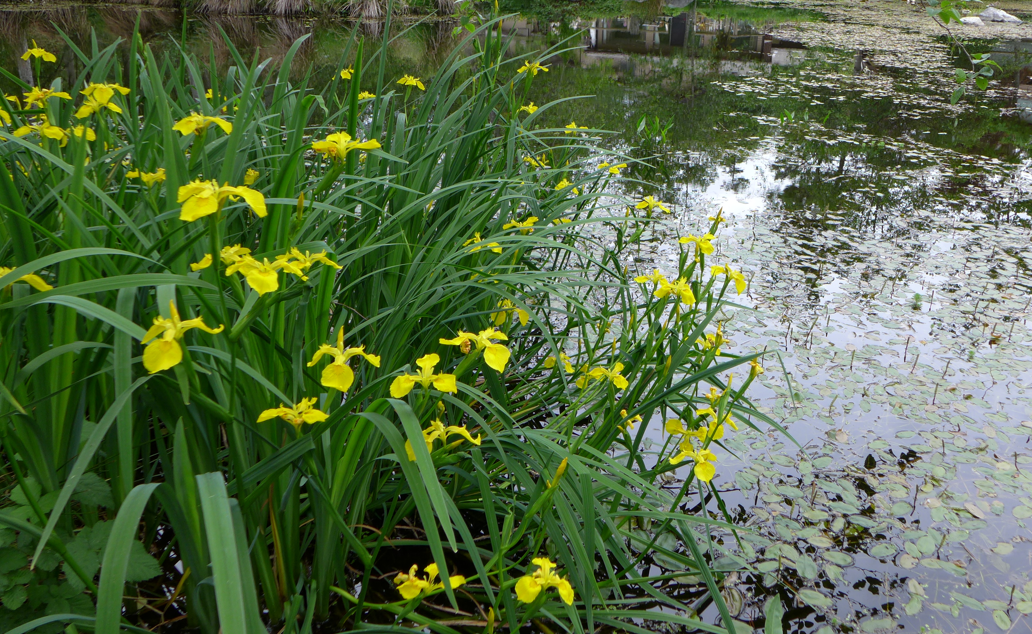Raising a flag about Yellow Flag Iris
On June 17th, HAT staff co-hosted a Yellow Flag Iris (YFI) management workshop with Dr. Catherine Tarasoff. Dr. Tarasoff and her colleagues have developed a successful benthic barrier technology to reduce infestations of Yellow Flag Iris in the region that is environmentally friendly and low cost. This workshop was a hands-on learning opportunity for local habitat stewards, and took place on a habitat stewardship property in the Highlands.
You might be wondering, what is Yellow Flag Iris? Yellow Flag Iris is an ornamental garden plant with bright yellow flowers that is spreading rapidly, outcompeting native plant species and altering aquatic ecosystems across the Pacific Northwest. This species grows in ponds, wetlands, streams, lake shorelines, and ditches. It alters habitat by compacting soil, increasing elevation, and trapping sediments, and affects critical food sources of birds. Yellow Flag Iris is difficult to remove as the rhizomes form thick, interwoven mats. Several hundred plants may be connected by this extensive root system!
YFI presents a unique challenge to our stewards as it requires a high level of technology and knowledge for effective management. Management options for this species are limited herbicide use in wetlands is not permitted, and manual removal is costly and time consuming. Therefore, the benthic barrier technology is critical tool in the control of YFI. The barriers are a non-porous, rubber material that blocks out light and air, effective due to the inability for YFI to survive under dark, anoxic conditions.
What can you do?
Below are some videos about the benthic barrier method made by Dr. Catherine Tarasoff who hosted the workshop.
Demonstration of installation (Zip ties might help with installation over spikes)
Assessing when to remove barrier
Shopping List for your Toolkit (To add to the list: zip ties, tools to punch holes, pinflags)
Parts of Yellow flag iris that is in the water can be cut below the water level and they will drown. You just need to make sure that they don’t create a “snorkel” - which would be used to release the carbon dioxide that builds up when they are under water and can’t breathe. The benthic barrier will be used for shallow and terrestrial areas.
Pictures from YFI workshop
